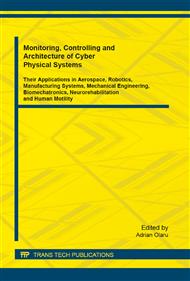p.345
p.351
p.360
p.369
p.378
p.388
p.395
p.403
p.413
Shape Measurement Based on 3D Optical Scanner: Real Case Study in the Aeronautics Industry
Abstract:
Three dimensional (3-D) geometric shape measurements have found wide applications in the fields of industrial manufacturing, fast reverse engineering, quality control, biomedical sciences, etc. In the present paper we focus our attention on Reverse engineering. It starts from an existing product, and creates a CAD (Computer Aided Design) model, for modification or reproduction of its design. This kind of process is usually undertaken in order to redesign a system for better maintainability or to obtain a copy of a system without access to design from which it was originally produced. There are many different methods for acquiring shape data. Tactile methods represent a popular approach to shape capture. The most commonly known forms are Coordinate Measuring Machines (CMMs) and mechanical or robotic arms with a touch probe sensing device. Non-contact methods use light, sound or magnetic fields to acquire shape from objects. In the case of contact and non-contact, an appropriate analysis must be performed to determine the positions of points on objects surface. The aim of this paper is to present a new reconstruction method of three-dimensional measuring system for objects acquisition: reverse engineering based on structured light system. This technique consists in projecting a known pattern of pixels (structured light) on an object: the way in which this pattern is deformed encountering the object surfaces, allows vision systems (a couple of monochromatic digital cameras) to calculate depth information necessary for surfaces digitization. The subsequent application of this methodology has been to reengineer an aeronautical component that has changed over time and divergent from initial project. At last have been studied proposals and possible solutions that ensure an higher quality of manufactured products and a substantial savings in costs of production system of the product itself.
Info:
Periodical:
Pages:
378-387
Citation:
Online since:
October 2014
Authors:
Price:
Сopyright:
© 2014 Trans Tech Publications Ltd. All Rights Reserved
Share:
Citation:


